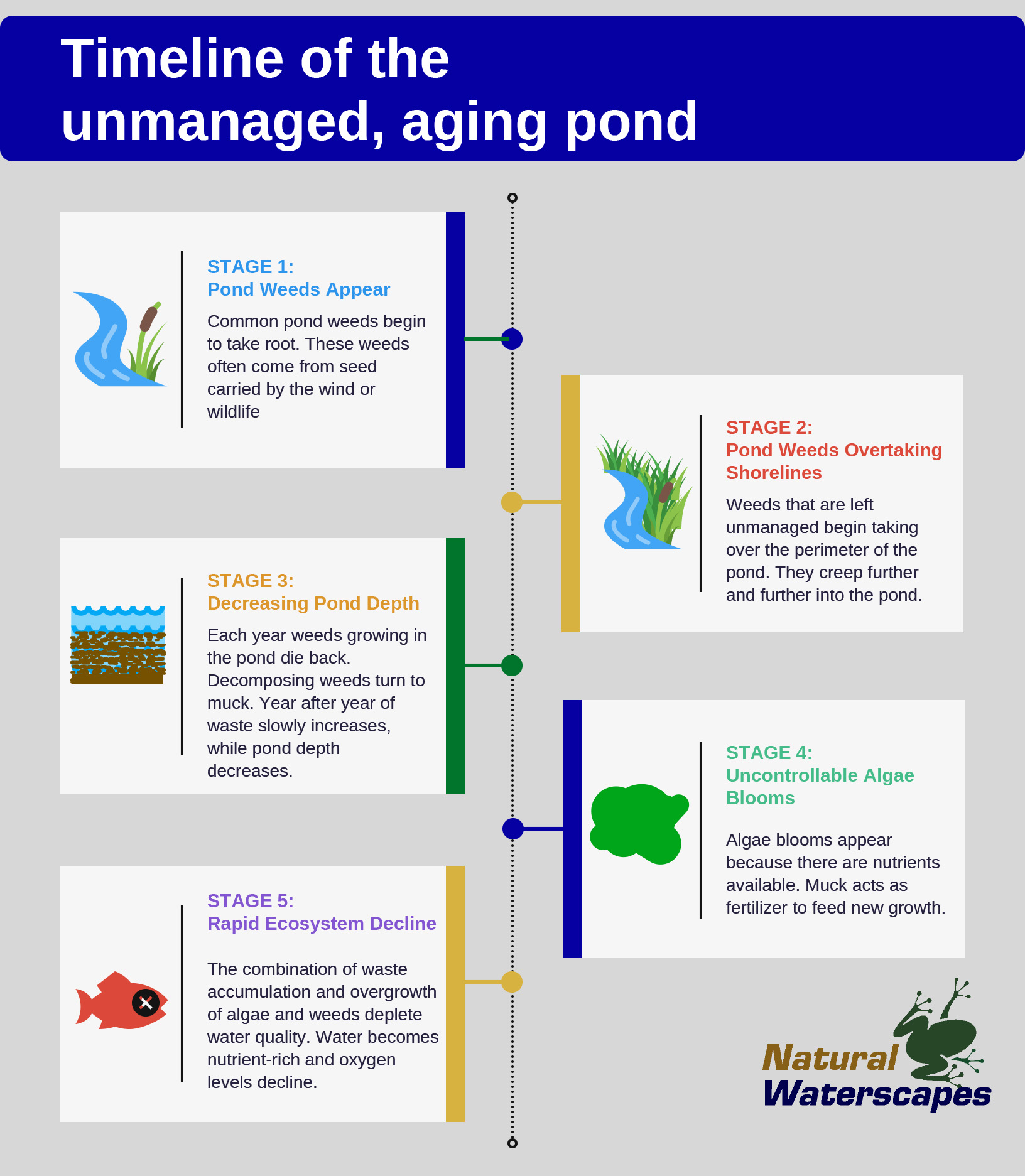Unmanaged Aging Ponds
For most ponds, the aging process is gradual. After 20-30 years waste has accumulated enough to hit a breaking point.
The aging process of a pond varies based on a number of factors including:
- Presence of aquatic weeds
- Nearby trees
- Waterfowl living at the pond
- Fish load
- Nutrients flowing into the pond
- Circulation

Marginal pond plants serve a role in the ecosystem of the pond. The provide habitat for breeding and protection of young fish. They stabilize the banks against erosion. They can also help with nutrient uptake.
Left unmanaged, these same helpful plants can turn into the enemy. Each year vegetation dies back and converts to muck. As the muck builds up, aquatic plants can creep further and further into the pond.
Besides shoreline weeds, wildlife that visit add to the pond waste. Leaves and pine needles that fall from trees also add to the muck.
Muck = Fertilizer
Algae blooms feed on muck because it is rich in nutrients. As muck increases and water quality degrades, algae can become unmanageable.
Overgrowth of weeds and algae reduce dissolved oxygen levels. The combination of nutrient-rich water and reduced oxygen is catastrophic to aquatic life.
Pond Remedies
To slow down or even reverse affects of aging, introduce beneficial bacteria treatments and increase oxygen levels. Adding good bacteria like Muck Remover and Pond Cleanse reduce accumulated waste and remove unwanted nutrients from water. Increasing dissolved oxygen with a pond aerator increases good bacteria activity and slows the accumulation of new muck.
